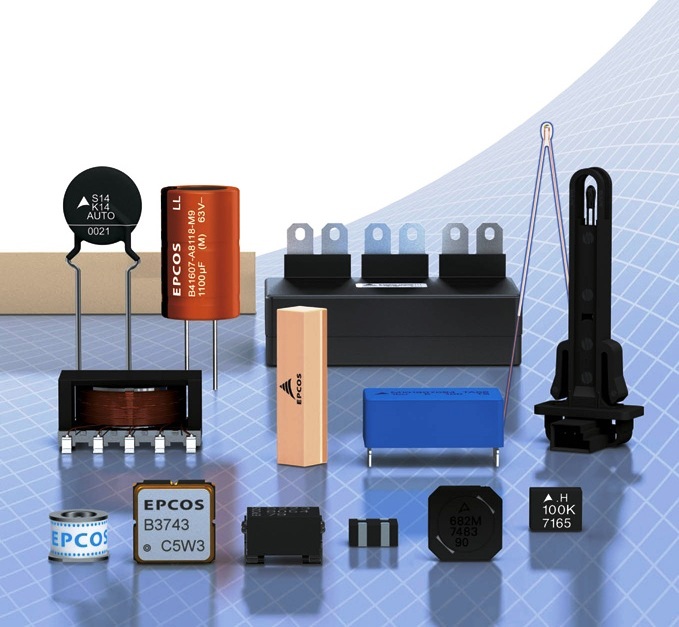The most frequently asked questions on TDK (Epcos) sensors characteristics and fields of application a re represented in this article.The special attention is is paid to issues related to TDK (Epcos) thermistors.
Q: What is a thermistor?
A: A thermistor is a resistor whose resistance is extremely sensitive to changes in temperature. It is also called "thermally sensitive resistor".
Q: What are NTC thermistors?
A: NTC Thermistors are thermistors with a negative temperature coefficient, that is, where resistance drops with increases in temperature. So NTC Thermistors are also called "negative temperature coefficient thermistors".
Q: What are the distinguishing features of TDK Thermistors?
A: TDK's high-performance thermistors have been created from carefully selected high quality materials using our original fine ceramics manufacturing technologies and precision manufacturing technologies.
Q: What can NTC thermistors be used for?
A: TDK NTC thermistors are widely used as the followings:
| Field | Application |
| Automobile | Intake-air temperature sensors, exhaust-air temperature sensors, cooling-water temperature sensors, lubricating-oil temperature sensors |
| Air conditioning | Oil fan heaters, solar heating systems, air conditioners |
| Office automation equipment | Copier-facsimiles, computer equipment |
| Medical instruments | Clinical thermometers, intravenous injection temperature regulators, neonatal incubators |
| Cooking appliances | Microwave ovens, steam ovens, electric crock pots, electric ranges, electric ovens |
| Home medical electronics | Electronic clinical thermometers, warm washing toilets, electric curling irons |
| Household appliances | Refrigerators, irons, electric water-heaters, electric tea-pots, electric coffee-makers, washing machines, TVs, video cassette recorders, stereo sets, radios |
| Information and Telecommunications | Cellular phones, chargeable battery pack, personal computers |
Q: What kinds of sensor products does TDK offer?
A: TDK offers various types of sensor products such as temperature sensors, pressure sensors, angle sensors, and current sensors. A detailed information on TDK sensors is represented at our web-site in corresponding sections.
Q: What can I do to receive a sample?
A: We recommend you to consult with our technical specialists
Q:Can the NTCGP3UG503HCZCCA code be used after cutting?
A: Changes in RT characteristics usually do not occur due to some wire cutting. Please, be sure that no stress is applied on the thermistor part during wire cutting.
Q: Please provide precautions when attaching the NTCDP4AG103HCFCBA.
- Please use M4 pan head screw or flat pan head screw.
- Please fix them at 68.6N or below.
- Please be sure that the attaching surface is a hard object and flat.
- Do not use any spring washers.
Q: What kinds of temperature sensors does TDK offer?
A: We offer three types of NTC sensors including chip, element, and assembly. TDK offers a wide lineup of temperature sensor elements and temperature sensor assembly with excellent long-term stability and short response time for automotive, home, and industrial applications. Narrow resistance tolerance and B constant tolerance allow highly accurate temperature sensing capabilities.
Q: What are the uses of clamp AC current sensors?
A: They are optimal sensors that meet high-current sensing needs as BEMS, FEMS, and CEMS are introduced in consideration of the global environment and energy conservation measures.
Q: Are there any documents available for selecting chip NTC thermistors?
A: There is that let you see lists of products by product feature and application. Please be sure to take a look, or you can consult our technical specialists.
Electrical Characteristics
Q: What are the individual parameters of a thermistor?
A: Primarily the resistance value, B constant, heat dissipation coefficient and heating time constant.
Q: What is the zero load resistance value?
A: Resistance value of a thermistor measured at a prescribed temperature, also called no-load resistance value. The value is normally measured at a standard temperature of 25 °C. The measurement is conducted at a power level such that the influences of spontaneous heat generation can be negligible.
Q: What is temperature compensation?
A: Temperature compensation aims to reduce the effect of temperature fluctuations on components that are sensitive to changes of temperature. NTC thermistors are often used for temperature compensation of oscillating frequency of a quartz crystal oscillator.
Q: What is the B constant?
A: A constant representing change in resistance, calculated using the resistance value at two specified ambient temperatures according to the following formula:
B = ln(R/R0) / (1/T - 1/T0)
R - Resistance value at time when ambient temperature is T (K).
R0 - Resistance value at time when ambient temperature is T0 (K).
Q: What is the heat dissipation coefficient?
A: The amount of heat lost for each 1°C difference in temperature between a hot body and its surroundings in a unit time.
Q:What is withstand voltage?
A: Indicates the amount of voltage that can be resisted when applied for three minutes in still air at 25°C. Withstand voltage is measured using a method that starts at 0V and then gradually increases the amount of voltage applied.
Q: What is the heating time constant?
О:The time taken to change the temperature of a thermistor from an initial temperature T0 to the target temperature is called the heating time constant. The symbols representing the rate of change from T0 to the target temperature are defined in Table 1. Normally the rate of change 63.2% is used as a standard.
Q: Please explain how to receive environmental data.
A: You can consult technical specialists
Q: Are clamp AC current sensors RoHS-compliant?
О: They comply with RoHS Directives.
Q: How are NTC thermistors calibrated?
О: At TDK thermistors are submerged in 25°C, 50°C and 85°C silicon oil and left to sit there for around 10 minutes until stable, then measured with a multimeter. When carrying out the measurements, we select a range of voltages where the applied current will not generate heat.




